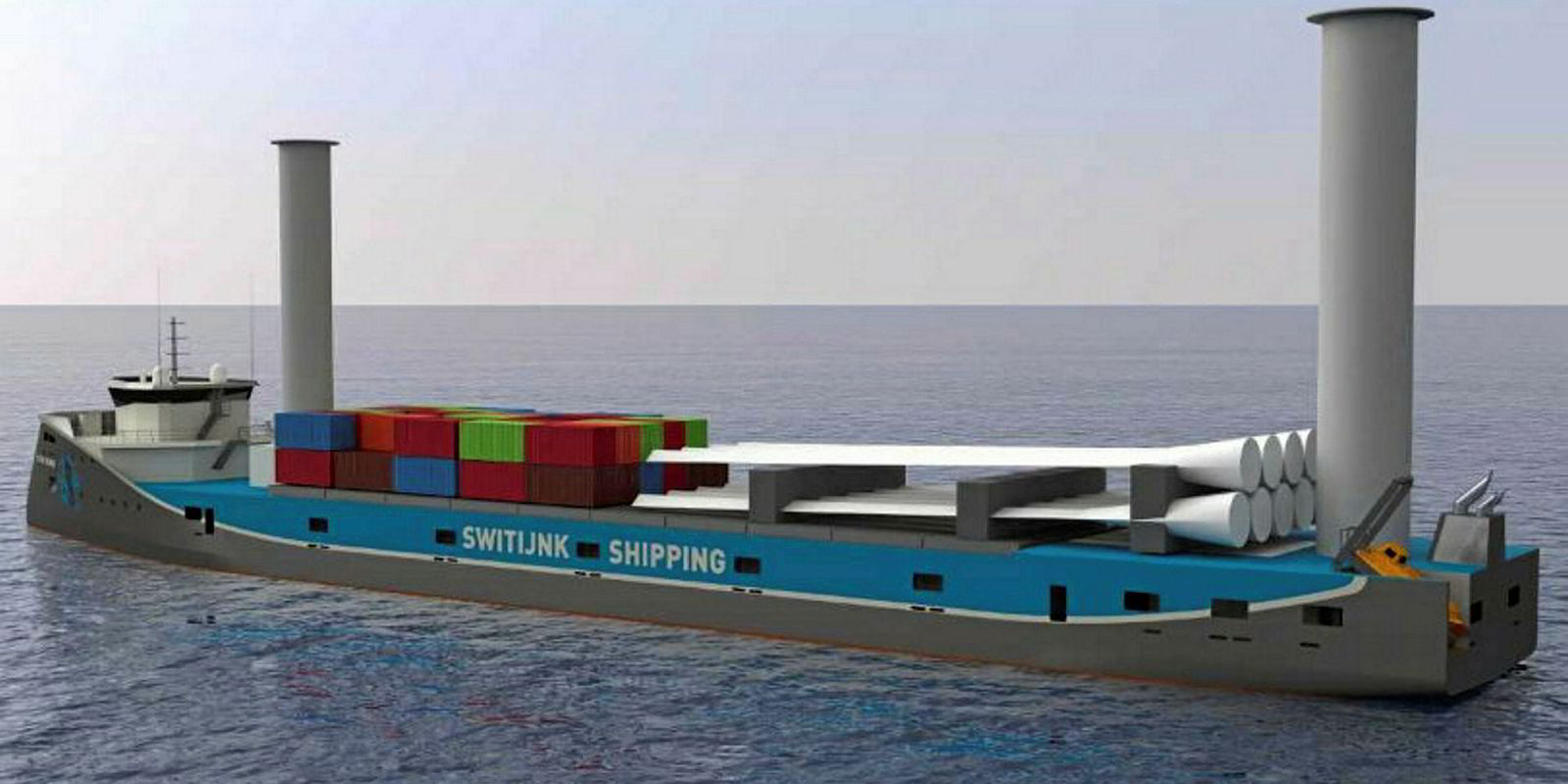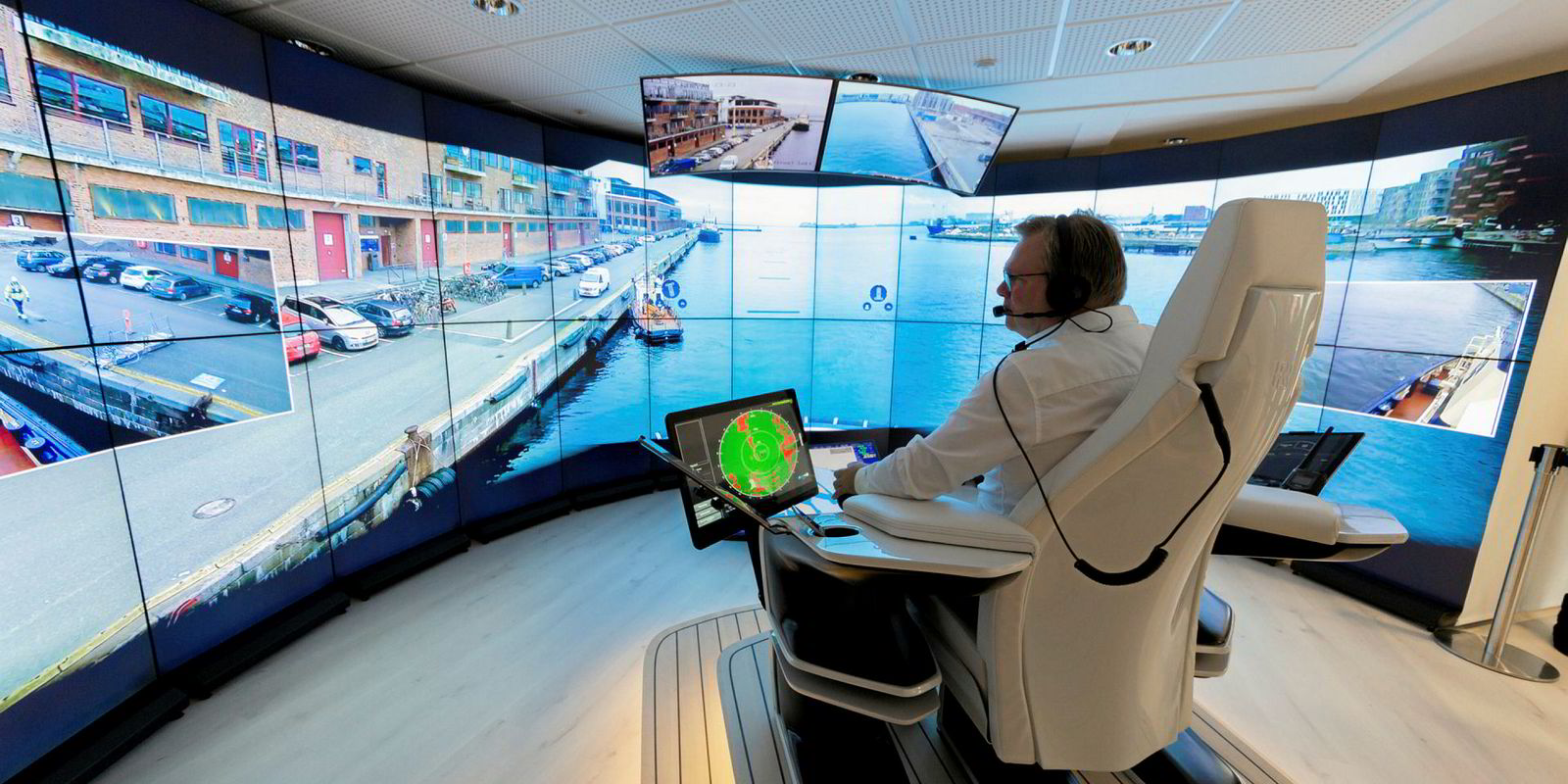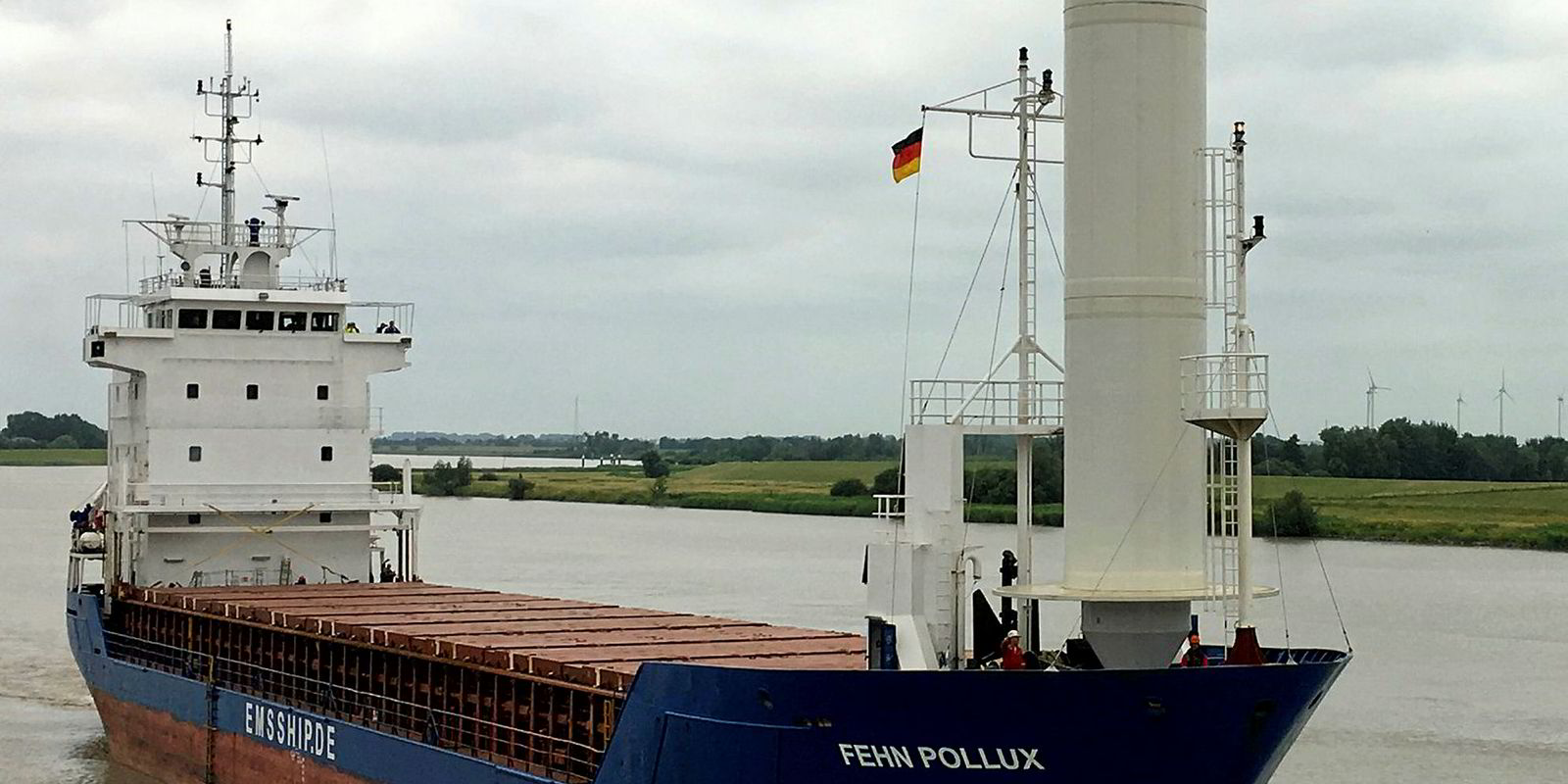Germany’s Fehn Ship Management (FSM) has begun trading a multipurpose (MPP) vessel with an Eco-Flettner rotor sail after it completed sea trials in June.
FSM managing director Matthias Hesse tells TradeWinds that at the end of the one-year project, the company will decide whether to keep the 37-tonne rotor sail on the 4,250-dwt Fehn Pollux (built 1997) or use it on another ship.
As the 90-metre-long Fehn Pollux is 21 years old, this is very much a research project. Hesse says rotor sails on a younger vessel, especially newbuildings, makes more sense because of the longer payback window.
The Fehn Pollux’s rotor is 18 metres high and has a diameter of three metres.
Installation involved strengthening the hull structure and securing the rotor foundation. New wires had to be laid between the forecastle and bridge to connect the Eco-Flettner to its control panel.
Fehn says the crew was involved in the installation and trained on a ship-handling simulator in Leer to manoeuvre the vessel in different situations.
A DNV GL classification society representative was onboard during the trials and was said to be very satisfied with the performance.
Hesse says he cannot give a precise figure of how much the rotor sail has cost, although TradeWinds earlier reported an estimate in the range of €350,000 ($407,000) to €400,000.
He says it has been insured for €750,000. Data from trading the ship is needed before anything can be said about amortisation.
Hesse adds that knowledge for the research project has been collected over the past three years, including computer-generated predictions on fuel savings. The rotor was tested for months onshore.
The University of Applied Science Emden/Leer is monitoring the rotor’s performance while the ship is sailing between ports in the Baltic, North, Mediterranean and Black seas.
University calculations indicate that a single Flettner rotor sail can reduce fuel consumption by upwards of 5%, Hesse says.
It would be difficult to fit more than one on the Fehn Pollux but, if a second were possible, then the fuel reduction could be 12% to 15%.
The Fehn Pollux has been chosen because part of the project aims to show whether rotor sails are feasible for this category of shortsea vessel.
Installation took around three weeks but also allowed for ship maintenance. The foundation of the rotor is made of individual sheets and weighs 6.5 tonnes.
Project manager Ralf Oltmanns said after the trials in the North Sea: “We are extremely satisfied with the performance of the Flettner rotor and that of the vessel.”
Professor Michael Vahs from the University of Applied Sciences Emden/Leer said: “The rotor works as planned and the ship behaves as calculated.”
Companies in north-west Germany and the Netherlands are involved in the project under the auspices of MariGreen. Between 60% and 70% of the project's cost has come from the European Union under the Interreg programme to stimulate cooperation between regions. The remainder is sourced from participating companies. In total, 12 to 15 partners are involved, including DNV GL.
To be on the “safe side”, the project uses an internal 70kW electric motor but Hesse tells TradeWinds that it could be less powerful. It turns the rotor at up to 280 revolutions per minute.
Various safety features have been incorporated. For example, the rotor will shut down if the ship’s heeling angle is more than 11.5 degrees or the wind is too strong. Stability tests were conducted by the university.
The automatic control system sets the optimal speed and direction of rotation of the rotor according to wind conditions, although it can be operated manually through the console. The onboard computer stores all the data, which is being analysed by the project team onshore.
In port, the vessel switches over to bow thrusters for manoeuvring. The shaft generator can supply electricity to either the thrusters or Eco-Flettner rotor, but not both.
FSM, which is part of the EMS-Fehn-Group, manages a fleet of 13 shortsea vessels.







